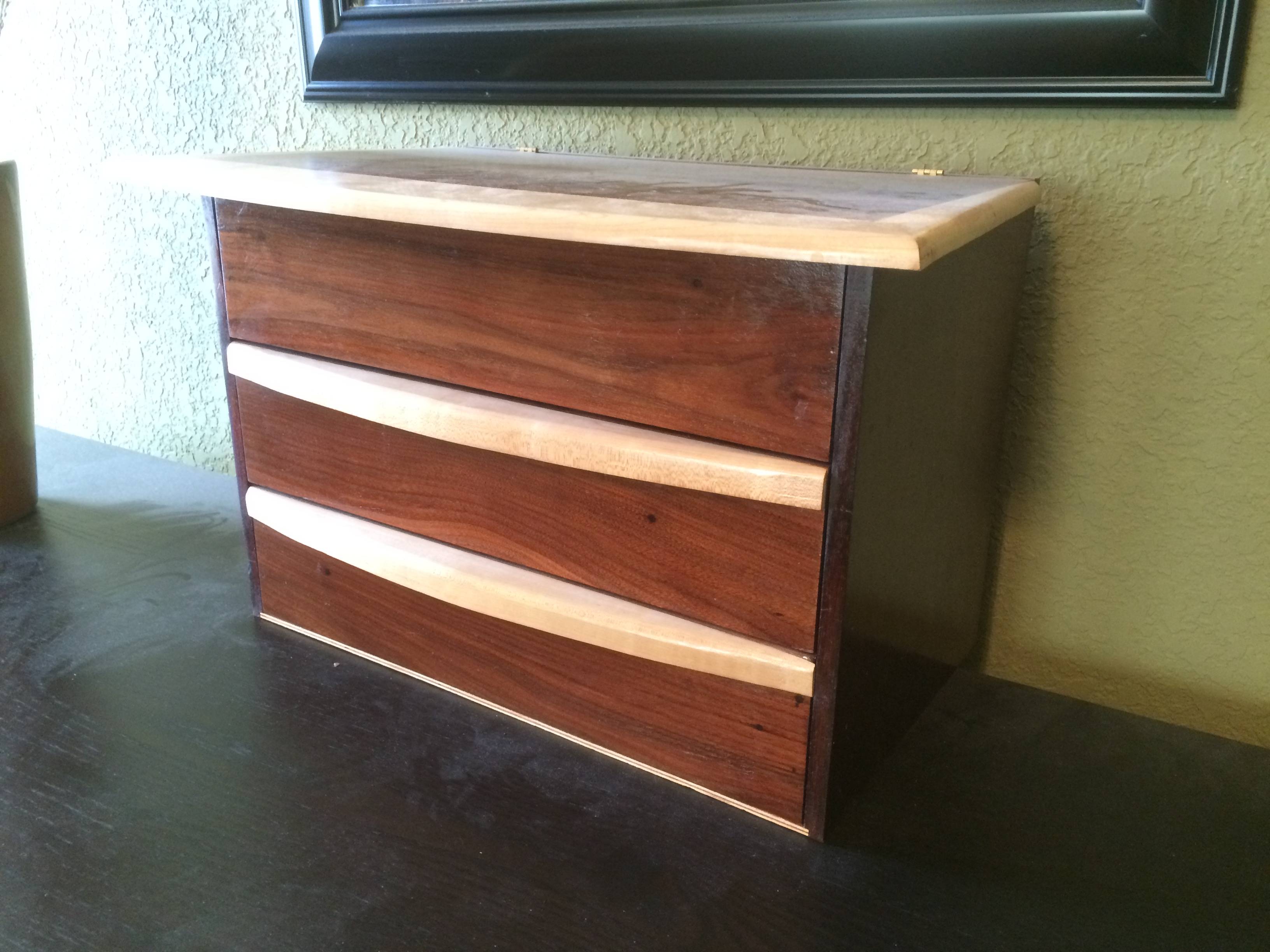It really depends on the wood. I'm not sure how well Kempas reacts to sunlight, but it may help or hinder you. I would suggest cutting a sample and leaving it to sun bake for a day or three, then compare it with an "unbaked" piece and see if you like the change.
The wood database has a good article on how you can cope with wood changing colors over time: treat(chemicals/dyes), postpone(UV protective finishes), or accept(Love the new color, maybe even try to encourage the shift).
There are chemical treatments for wood which permanently alter the color of the wood. Some are very simple even, but not only do they vary from wood to wood, but from cut to cut. So if you have several boards in a panel, each panel may take the chemical treatment differently. Something as simple as rubbing lemon juice on the surface might change it.
This page has a lot of possibilities for less common staining methods. The idea of using coffee as a stain intrigues me. Other possibilities include adding extra tannins by soaking it in tea, using various household chemicals (bleach, baking soda) to alter the color.
You could try ammonia fuming, though I have no experience with it. It reacts with tannic acid in the wood, which would have different levels from tree to tree and species to species. Once again I'm not sure how it would work with Kempas.
Unfortunately, as far as preserving the original color of the wood, that's harder. When the tree is dead and the wood is cut, it will be difficult to fully halt the chemical processes that have begun.
 I planed this (oddly shaped) piece, put a drink coaster on it and left it outside in the full sun for about four hours. As you can see, simply exposing the fresh cherry to sunlight for one afternoon darkened it dramatically. Since that time, the piece has aged to an even darker color. Perhaps your wood is a species that does this as well. You could put one of your pale pieces out in the sun for a day and see what happens. If you do, I'd put something opaque on it like a coaster or coffee mug so that you can see the difference.
I planed this (oddly shaped) piece, put a drink coaster on it and left it outside in the full sun for about four hours. As you can see, simply exposing the fresh cherry to sunlight for one afternoon darkened it dramatically. Since that time, the piece has aged to an even darker color. Perhaps your wood is a species that does this as well. You could put one of your pale pieces out in the sun for a day and see what happens. If you do, I'd put something opaque on it like a coaster or coffee mug so that you can see the difference.



